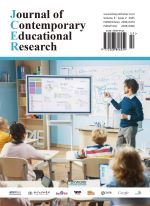Research on the Teaching Efficiency of Ideological and Political Classrooms Based on Blended Teaching
Abstract
This paper focuses on the research on the teaching efficiency of ideological and political classrooms under the background of blended teaching. It analyzes the connotation and characteristics of blended teaching, explores the impact of blended teaching on the teaching efficiency of ideological and political classrooms from multiple aspects, and conducts empirical research through case analysis and data collection. The results show that blended teaching can effectively improve the teaching efficiency of ideological and political classrooms, enhance students’ learning enthusiasm and participation, and promote the improvement of students’ ideological and political qualities. Finally, corresponding suggestions and countermeasures are put forward to provide a reference for the improvement of the teaching quality of ideological and political courses.
References
Graham CR, 2006, Blended Learning Systems: Definition, Current Trends, and Future Directions, in Bonk CJ, Graham CR, (Eds.), The Handbook of Blended Learning: Global Perspectives, Local Designs, Jossey-Bass, Hoboken, NJ, 3–21.
Watson J, Murin A, Vashaw L, et al., 2011, Keeping Pace with K-12 Online and Blended Learning, Evergreen Education Group, Durango, CO.
He K, 2004, Blended Learning: The New Development of Educational Technology. Journal of Distance Education, (3): 1–9.
Zhang S, 2014, Research on Innovative Teaching Methods to Improve the Teaching Efficiency of Ideological and Political Courses. Journal of Educational Research, (5): 45–50.
Li S, 2016, The Role of Curriculum Design in Promoting Students’ Learning in Ideological and Political Courses. Teaching and Management, (8): 32–35.

